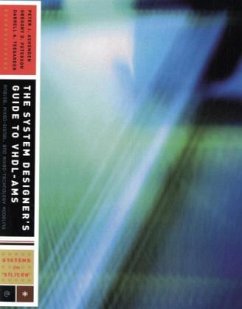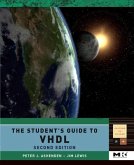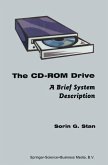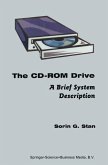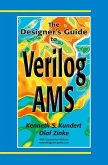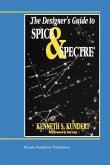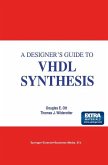The demand is exploding for complete, integrated systems that sense, process, manipulate, and control complex entities such as sound, images, text, motion, and environmental conditions. These systems, from hand-held devices to automotive sub-systems to aerospace vehicles, employ electronics to manage and adapt to a world that is, predominantly, neither digital nor electronic. To respond to this design challenge, the industry has developed and standardized VHDL-AMS, a unified design language for modeling digital, analog, mixed-signal, and mixed-technology systems. VHDL-AMS extends VHDL to bring the successful HDL modeling methodology of digital electronic systems design to these new design disciplines. Gregory Peterson and Darrell Teegarden join best-selling author Peter Ashenden in teaching designers how to use VHDL-AMS to model these complex systems. This comprehensive tutorial and reference provides detailed descriptions of both the syntax and semantics of the language and of successful modeling techniques. It assumes no previous knowledge of VHDL, but instead teaches VHDL and VHDL-AMS in an integrated fashion, just as it would be used by designers of these complex, integrated systems.
Explores the design of an electric-powered, unmanned aerial vehicle system (UAV) in five separate case studies to illustrate mixed-signal, mixed-technology, power systems, communication systems, and full system modeling.
Explores the design of an electric-powered, unmanned aerial vehicle system (UAV) in five separate case studies to illustrate mixed-signal, mixed-technology, power systems, communication systems, and full system modeling.
"I have used an early version of this book in a new course on modeling and simulation. I have found it to be an excellent reference for the students, and the case studies are extremely helpful in illustrating system level concepts."
--Alan Mantooth, The University of Arkansas
"Practicing engineers who need to understand the language but don't want the pain of deciphering the language reference manual will find this book very useful and appealing. The book provides a set of strong exercises with which a professor may teach and test undergraduate students. My belief is that any credible school who is preparing their students to work in the world today will offer such courses."
--Steve Drager
"This book is a thorough and detailed introduction to the standard language for mixed-signal design, VHDL-AMS. The tutorial nature of the book, with its step-by-step case studies, makes it an invaluable tool for both students and practicing engineers who need to make effective use of VHDL-AMS in their daily work."
--Peter Wilson, University of Southampton, UK
--Alan Mantooth, The University of Arkansas
"Practicing engineers who need to understand the language but don't want the pain of deciphering the language reference manual will find this book very useful and appealing. The book provides a set of strong exercises with which a professor may teach and test undergraduate students. My belief is that any credible school who is preparing their students to work in the world today will offer such courses."
--Steve Drager
"This book is a thorough and detailed introduction to the standard language for mixed-signal design, VHDL-AMS. The tutorial nature of the book, with its step-by-step case studies, makes it an invaluable tool for both students and practicing engineers who need to make effective use of VHDL-AMS in their daily work."
--Peter Wilson, University of Southampton, UK

